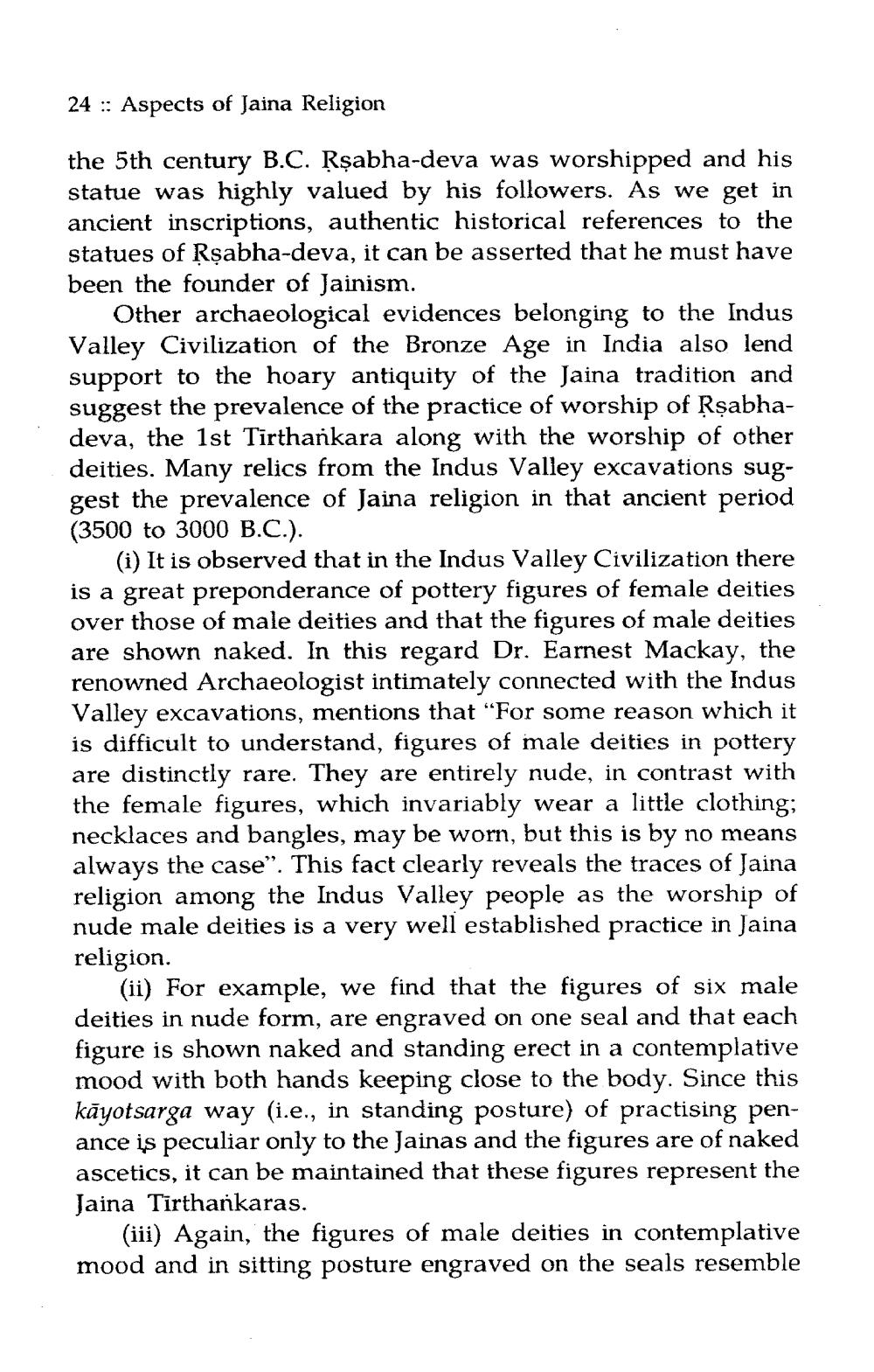________________
24 :: Aspects of Jaina Religion
the 5th century B.C. Rşabha-deva was worshipped and his statue was highly valued by his followers. As we get in ancient inscriptions, authentic historical references to the statues of Rşabha-deva, it can be asserted that he must have been the founder of Jainism.
Other archaeological evidences belonging to the Indus Valley Civilization of the Bronze Age in India also lend support to the hoary antiquity of the Jaina tradition and suggest the prevalence of the practice of worship of Rşabhadeva, the 1st Tirthankara along with the worship of other deities. Many relics from the Indus Valley excavations suggest the prevalence of Jaina religion in that ancient period (3500 to 3000 B.C.).
(i) It is observed that in the Indus Valley Civilization there is a great preponderance of pottery figures of female deities over those of male deities and that the figures of male deities are shown naked. In this regard Dr. Earnest Mackay, the renowned Archaeologist intimately connected with the Indus Valley excavations, mentions that “For some reason which it is difficult to understand, figures of male deities in pottery are distinctly rare. They are entirely nude, in contrast with the female figures, which invariably wear a little clothing; necklaces and bangles, may be worn, but this is by no means always the case”. This fact clearly reveals the traces of Jaina religion among the Indus Valley people as the worship of nude male deities is a very well established practice in Jaina religion.
(ii) For example, we find that the figures of six male deities in nude form, are engraved on one seal and that each figure is shown naked and standing erect in a contemplative mood with both hands keeping close to the body. Since this kāyotsarga way (i.e., in standing posture) of practising penance is peculiar only to the Jainas and the figures are of naked ascetics, it can be maintained that these figures represent the Jaina Tirtharkaras.
(iii) Again, the figures of male deities in contemplative mood and in sitting posture engraved on the seals resemble




